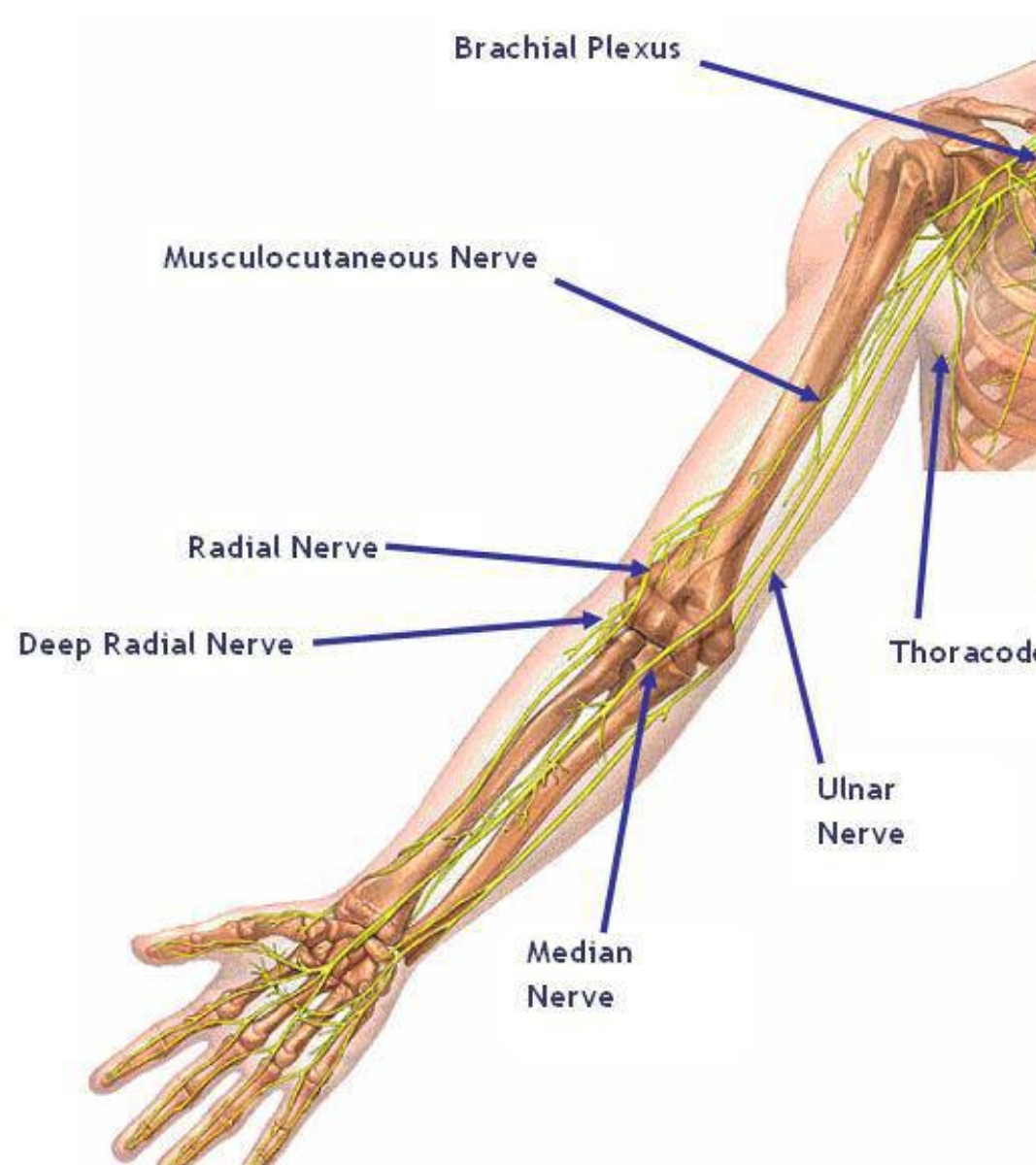Do you require any assistance? Simply reserve your appointment online below
Nerve Injuries
We help you address the nerve damage
Nerve injuries
Nerves are the body’s “telephone wiring” system that carries messages between the brain and the rest of the body.
Some nerves carry messages from the brain to muscles to make the body move. Other nerves carry messages about pain, pressure, or temperature from the body to the brain.
Nerves are fragile and can be damaged by pressure, stretching, or cutting. Injury to a nerve can stop signals to and from the brain, causing muscles not to work properly, and a loss of feeling in the injured area.
Motor nerves carry messages between the brain and muscles to make the body move.
Sensory nerves carry messages between the brain and different parts of the body to signal pain, pressure, and temperature.

Signs and Symptoms of nerve injuries

The signs and symptoms of nerve injuries can be different depending on the nerve injured, the type of injury, and the severity of the injury. Some may include:
Numbness: Some nerves only transmit sensation, so a nerve injury to these nerves would cause some amount of numbness.
Pain: This is frequently a symptom after nerve injury. The pain present after a nerve injury can be anywhere along the course of the nerve, but it is typically at the injury site.
Carpal tunnel syndrome is an example of a nerve injury that can recur. Carpal tunnel syndrome occurs when the median nerve has too much pressure on it as it crosses the wrist.
The symptoms of numbness in the hand, pain in the hand, pain in the wrist, pain in the forearm, or weakness (particularly in the thumb) can be present.
Causes of nerve injuries
Pressure or stretching injuries can cause fibers within the nerve to break. This may interfere with the nerve’s ability to send or receive signals, without damaging the cover.
A cut to the nerve can cause it to no longer transmit signals, because the signal cannot jump through a gap in the nerve.
If the insulation has not been cut, the end of the fiber farthest from the brain dies. The end that is closest to the brain does not die.
After some time, it may begin to heal. New fibers may grow beneath the intact insulating tissue until it reaches a muscle or sensory receptor.
If both the nerve and insulation have been severed and the nerve is not fixed, the growing nerve fibers may form a painful nerve scar, or neuroma.
Diagnosing Nerve Injuries
Your doctor will review your medical history, ask about any accidents or previous surgeries, and discuss your symptoms with you.
Your doctor will also conduct a physical and neurological examination. If your neurological examination shows signs of a nerve injury, your doctor may recommend diagnostic tests, which may include an electromyography, nerve conduction study, and MRIs

Treatment of Nerve Injuries

Some Nerve injuries can get better without help, but some injuries need to be repaired.
- Mild injuries to the nerve: The nerve can repair itself, either within minutes or after a number of weeks. During this time, messages between the brain and body can be altered. Supportive treatment often helps, but in some cases surgery is needed.
- Broken nerve fibers or more severe injuries: The nerves can grow back to their muscle or skin areas, but this process can take several months, and the messages between the brain and body will stop until the nerves grow. Treatment may be supportive care, but surgery may be needed depending on the type of injury.
- Cut nerve: When both the nerve outer wrap and inner fibers of the nerve are cut, surgery is typically needed to allow the nerve to heal correctly.
Nerves usually grow one inch every month, depending on the patient’s age and other factors. With an injury to a nerve in the arm above the fingertips, it may take up to a year before feeling returns to the fingertips.
The feeling of pins and needles in the fingertips is common during the recovery process. While this can be uncomfortable, it usually passes and is a sign of recovery.
Restoring Function
Recovery after surgery
The nerve fibers grow slowly and, in ideal conditions, may grow about one inch every month after a nerve is sewn back together in surgery. It can take many months for the nerve to finish growing after an injury depending on many factors including the length that the nerve that needs to grow. It can also take this long for muscles to work well again. There might be numbness, pain or a “pins and needles” feeling during the healing period.
Physical therapy is sometimes needed after a Nerve injuries.
Results during recovery after nerve injury can depend on your age and health, the type of Nerve injuries, and the injured body part.


A number of treatments can help restore function to Nerve injuries.
- Braces or splints. These devices help hold the affected limb, fingers, hand or foot in the proper position to improve muscle function.
- Electrical stimulator. Stimulators can activate muscle served by an injured nerve while the nerve regrows. However, this treatment may not be effective for everyone. Your doctor will discuss electrical stimulation with you if it’s an option.
- Physical and occupational therapy. Therapy involves specific movements or exercises to keep your affected muscles and joints active. Physical therapy can prevent stiffness and help restore function and feeling.
- Exercise. Exercise can help improve your muscle strength, maintain your range of motion and reduce muscle cramps.
